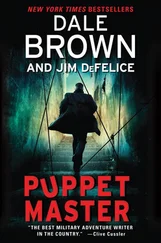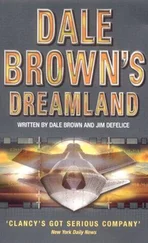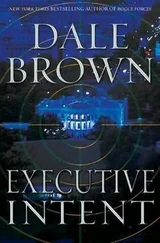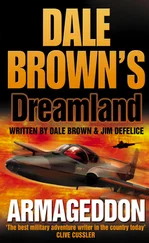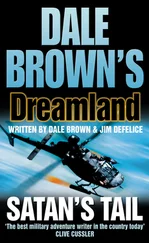Dale Brown - Sky Masters
Здесь есть возможность читать онлайн «Dale Brown - Sky Masters» весь текст электронной книги совершенно бесплатно (целиком полную версию без сокращений). В некоторых случаях можно слушать аудио, скачать через торрент в формате fb2 и присутствует краткое содержание. Жанр: Старинная литература, на английском языке. Описание произведения, (предисловие) а так же отзывы посетителей доступны на портале библиотеки ЛибКат.
- Название:Sky Masters
- Автор:
- Жанр:
- Год:неизвестен
- ISBN:нет данных
- Рейтинг книги:4 / 5. Голосов: 1
-
Избранное:Добавить в избранное
- Отзывы:
-
Ваша оценка:
- 80
- 1
- 2
- 3
- 4
- 5
Sky Masters: краткое содержание, описание и аннотация
Предлагаем к чтению аннотацию, описание, краткое содержание или предисловие (зависит от того, что написал сам автор книги «Sky Masters»). Если вы не нашли необходимую информацию о книге — напишите в комментариях, мы постараемся отыскать её.
Sky Masters — читать онлайн бесплатно полную книгу (весь текст) целиком
Ниже представлен текст книги, разбитый по страницам. Система сохранения места последней прочитанной страницы, позволяет с удобством читать онлайн бесплатно книгу «Sky Masters», без необходимости каждый раз заново искать на чём Вы остановились. Поставьте закладку, и сможете в любой момент перейти на страницу, на которой закончили чтение.
Интервал:
Закладка:
“Two, ” was Milo’s response. Mirisch tried a few more times to raise TOPPER, the call sign of their ground radar intercept team in the Strategic Range Training Complex, at the same time steering the formation toward the entry point of the military operating area. When they were at the right spot, Mirisch called out on an interplane, “Raider flight, still negative contact with GCI. Go to CAP orbit… now.”
“Two, ” Milo said. On Mirisch’s order, Milo made a hard left bank and executed a full 1 8O-degree turn until he was heading southeast toward the center of the MOA, while Mirisch continued heading toward the entry point of the MOA. They would continue to orbit the area in counter-rotating ovals, offset about twenty miles apart, so that their radars would scan a greater section of sky at one time. When radar or visual contact was made, the other plane would rendezvous and press the attack. There was only one more training sortie scheduled that day, call-sign Whisper One-Seven, that was not identified by type of aircraft. That didn’t matter, of course-it was a “bad guy, ” it was invading the territory of the Happy Hooligans, and it was going to go down in flames. That is, as soon as they could find it. For some reason, both the VIPVO GCI radar sites at Lemmon and Belle Fourche had failed to report the position of any attackers-and now the sites were off the air, which in General Calvin Jarrel’s make-believe world on the Strategic Training Complex meant that the sites had been “destroyed.” But someone was out there, and the Happy Hooligans were going to find them. … ABOARD WHISPER ONE-SEVEN “Twenty minutes to first launch point, Henry, ” Patrick McLanahan announced. “Awaiting final range clearance. The B-2 Black Knight stealth bomber pilot, Major Henry Cobb, replied with a simple “Rog” on the interphone. Patrick McLanahan looked over at his pilot. Cobb was not young-he had spent nearly seventeen years in the Air Force, most of it as a B-52 or B- 1 aircraft commander-and had been with the HAWC at Dreamland for only a year, specifically to fly HAWC’s B-2 bomber test article. Cobb was a most talented but, to McLanahan’s way of thinking, unusual pilot. Except to push a mode button on the main multi-function display, Cobb sat silently, unmoving, with one hand on the side-stick controller and the other on the throttles, from takeoff to landing. He flew the B-2 as if he, the human, were just another “black box, ” as integral a part of the massive four-engine bomber as the wings. If he hadn’t been in a military aircraft with the threat of an “enemy” attack so imminent, Cobb seemed so calm and relaxed that it would have looked natural for him to cross his legs or recline in his seat and put his feet up. In contrast to Cobb, Patrick McLanahan’s hands and body seemed in an almost constant state of motion, due mostly to the high-tech cockpit layout in the right-seat mission commander’s area. Dominating the entire right instrument panel was a single four-color multi-function display, called an SMFD, or Super Multi Function Display, measuring three feet across and eighteen inches wide, surrounded by function switchlights. The massive monitor had adjustable shades that could block out most of the light in the cockpit and reduce glare, but the big screen was so bright and had such sharp high-resolution images that glare shields were generally unnecessaryMcLanahan kept them retracted so Cobb could easily see the big screen. The right-side cockpit had several metal bars around the SMFD that acted as handholds or arm-steadying devices so the screen could still be accurately manipulated even during radical flight maneuvers. The main display on the huge SMFD was a three-dimensional view of the terrain surrounding the Black Knight, along with an undulating ribbon that depicted the bomber’s planned course. The B-2 was depicted riding the flight-path ribbon like a car on a roller coaster. The ribbon had “walls” on it, depicting the minimum and maximum suggested altitudes they should fly to avoid terrain or enemy threats-as long as they stayed within the confines of the computer-generated track, they could be on course, safe from all known or radar-detected obstructions and avoiding all known threats. Messages flashed on the screen in various places, several timers were running in a couple of corners of the screen, and “signposts” along the undulating flight-plan route ribbon flashed to warn McLanahan of upcoming events. The “landscape” in the God’s-eye view display was checkered with colored boxes, each depicting one square nautical mile, and small diamonds occasionally flashed on the screen to highlight radar aimpoints or visual navigation checkpoints. To General John Ormack, the deputy commander of the High Technology Aerospace Weapons Center, seated in the instructor pilot’s seat between the two cockpit crew members, it seemed like a completely incomprehensible jumble of information flitting across the big screen. Ormack was along to observe this very important test of the Sky Masters NIRTSat reconnaissance system interface on an Air Battle Force bombing exercise, but for most of this incredible mission he had been hard-pressed to keep up with the flurry of data. Patrick McLanahan, the B-2’s mission commander, seemed to drink it all in with ease. McLanahan was using three different methods to change the display or call up information. The two primary methods were eye-pointing and voice-recognition commands. Tiny sensors in McLanahan’s helmet tracked his eye movements and could tell a computer exactly where his eyes were focused. When his eyes were on the SMFD, McLanahan could call up information simply by looking at something and speaking a command-the computer would correlate the position of his eyes, the image on the screen, a set of commands associated with that image, then compare the digitized spoken command with the preprogrammed set of allowable commands and execute the proper one. All this would occur in less than a second. McLanahan could also point to the SMFD and touch a symbol or image to get more information or move the image where he wanted it. It was actually funny for Ormack to watch and listen to McLanahan as he worked-his interphone sounded like a series of unintelligible grunts and incomplete sentences. Ormack would see a cursor zip across the big screen, and he would hear a guttural “Pick.” A submenu would appear, and Patrick would read the information, then utter a quick “Close” to erase the display and return it to the main God’s-eye display. Every second was like that. McLanahan would be manipulating several different windows on the SMFD at once, zooming around each window, calling up streams of data that would be visible for only seconds at a time, and all while letting fly with a stream of seemingly random words: “Radar . . . pick . . . close… zoom… zoom… close… one… five… close… pick . . . pick one . . . close . . . track . . . one . . . left . . close. . Weapon-status information was arranged along the bottom of the display so both crew members could check their weapon status instantly. McLanahan could resize any display, move displays around the SMFD, and even program certain displays to appear or disappear when a timer expired or when he switched in or out of certain modes. He was getting very adept at using his left index finger to move or change displays while his right hand worked a keyboard or hit the voice-command button mounted on the control stick on the side instrument panel. To Ormack, it was like watching a kid play six different video games at once. McLanahan was flashing the different screens around the SMFD at an astounding rate. He was calling up radar images, scanning for fighters, setting up his bombing systems, talking on the radio, monitoring terrain, and sending messages on SATCOM, all with incredible speed and without missing one bit of information. “Wait a minute, Patrick, wait a minute, ” Ormack said over the interphone in absolute frustration. “You had the radar screen up for just a few seconds and then you took it down. Why?” McLanahan put the radar image back on the left side of the SMFD so Ormack could see it clearly and explained, “Because all I need to check on that screen is whether or not the crosshairs fell close to the offset aimpoint-here.. .” He pointed to the screen. “I don’t see anything.” McLanahan touched the circular crosshairs on the radar display and a menu appeared. He slid his finger down to a legend that read, 1110 MRES. The screen instantly changed to show a tiny white dot near a cluster of buildings. A circular cursor was superimposed over the dot, with a set of thin crosshairs lying right on it. “Here’s the offset, a grain storage bin.” He motioned to a set of numbers in a corner of the enlarged display. “Crosshairs are within a hundred feet of the offset, so I know the system is good. I also check for terrain, but since we’re VFR and heads out of the cockpit, and it’s so flat around here anyway, I don’t have to spend too much time worrying about the terrain-the nearest high terrain is Devil’s Tower, over fifty miles away. “I get it, ” Ormack said. “You also don’t want to be transmit ting that long either, right? The fighters can pick up your radar emissions… “I was transmitting for about three seconds, ” McLanahan explained. “I was in ‘Radiate’ on the radar long enough to get this image, then shut down. But the bombing computer digitizes the radar image and stores it in screen memory until I release it. I can complete the rest of the bomb run with a radar image that’s over two minutes old, and aim on it right up to release. When we get closer to the target I’ll start fine-aiming on the release offsets, which are much more precise, but right now I’m trying to find those fighters.”
Читать дальшеИнтервал:
Закладка:
Похожие книги на «Sky Masters»
Представляем Вашему вниманию похожие книги на «Sky Masters» списком для выбора. Мы отобрали схожую по названию и смыслу литературу в надежде предоставить читателям больше вариантов отыскать новые, интересные, ещё непрочитанные произведения.
Обсуждение, отзывы о книге «Sky Masters» и просто собственные мнения читателей. Оставьте ваши комментарии, напишите, что Вы думаете о произведении, его смысле или главных героях. Укажите что конкретно понравилось, а что нет, и почему Вы так считаете.

